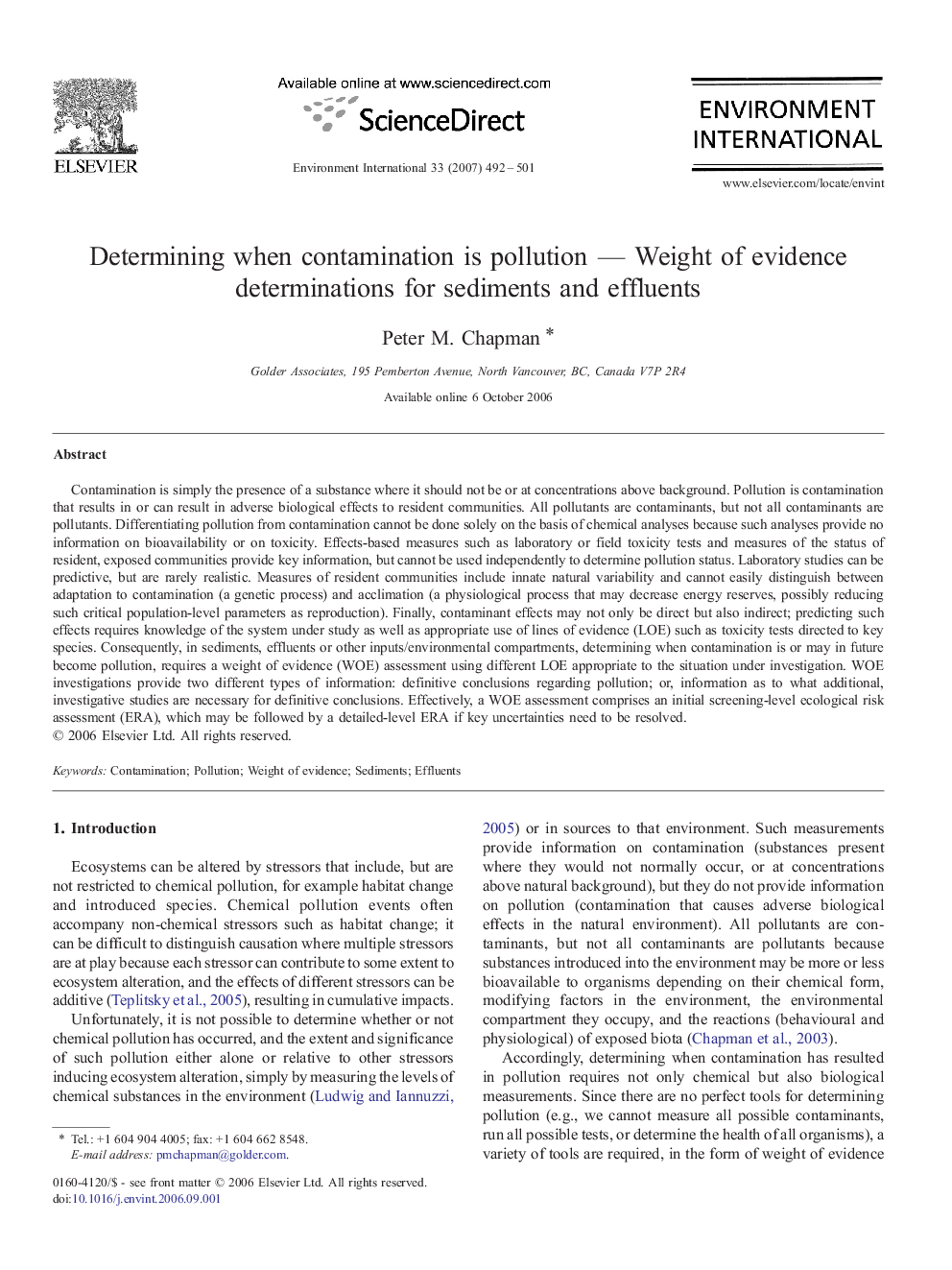| کد مقاله | کد نشریه | سال انتشار | مقاله انگلیسی | نسخه تمام متن |
|---|---|---|---|---|
| 4423969 | 1308855 | 2007 | 10 صفحه PDF | دانلود رایگان |

Contamination is simply the presence of a substance where it should not be or at concentrations above background. Pollution is contamination that results in or can result in adverse biological effects to resident communities. All pollutants are contaminants, but not all contaminants are pollutants. Differentiating pollution from contamination cannot be done solely on the basis of chemical analyses because such analyses provide no information on bioavailability or on toxicity. Effects-based measures such as laboratory or field toxicity tests and measures of the status of resident, exposed communities provide key information, but cannot be used independently to determine pollution status. Laboratory studies can be predictive, but are rarely realistic. Measures of resident communities include innate natural variability and cannot easily distinguish between adaptation to contamination (a genetic process) and acclimation (a physiological process that may decrease energy reserves, possibly reducing such critical population-level parameters as reproduction). Finally, contaminant effects may not only be direct but also indirect; predicting such effects requires knowledge of the system under study as well as appropriate use of lines of evidence (LOE) such as toxicity tests directed to key species. Consequently, in sediments, effluents or other inputs/environmental compartments, determining when contamination is or may in future become pollution, requires a weight of evidence (WOE) assessment using different LOE appropriate to the situation under investigation. WOE investigations provide two different types of information: definitive conclusions regarding pollution; or, information as to what additional, investigative studies are necessary for definitive conclusions. Effectively, a WOE assessment comprises an initial screening-level ecological risk assessment (ERA), which may be followed by a detailed-level ERA if key uncertainties need to be resolved.
Journal: Environment International - Volume 33, Issue 4, May 2007, Pages 492–501